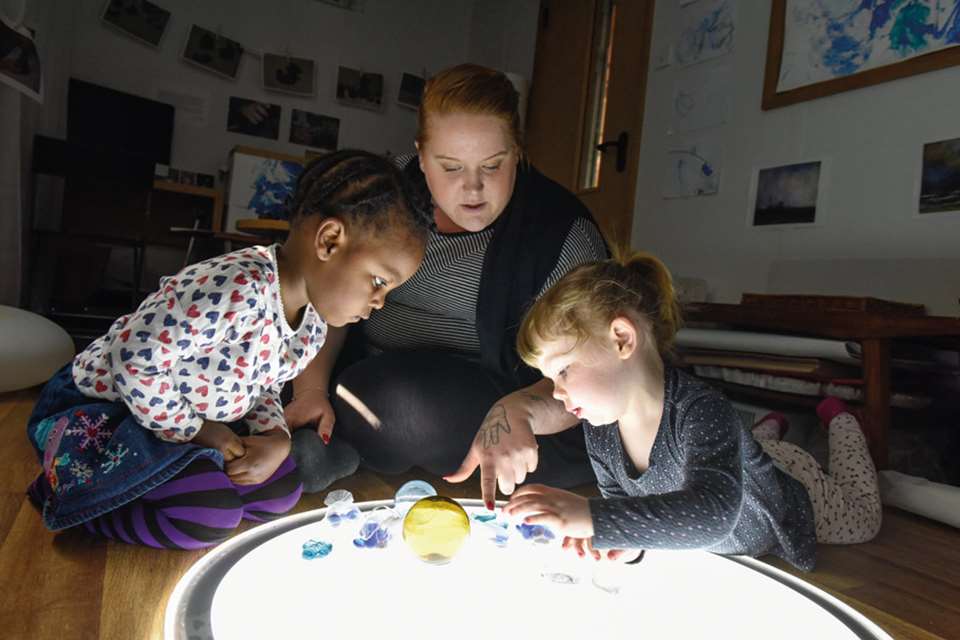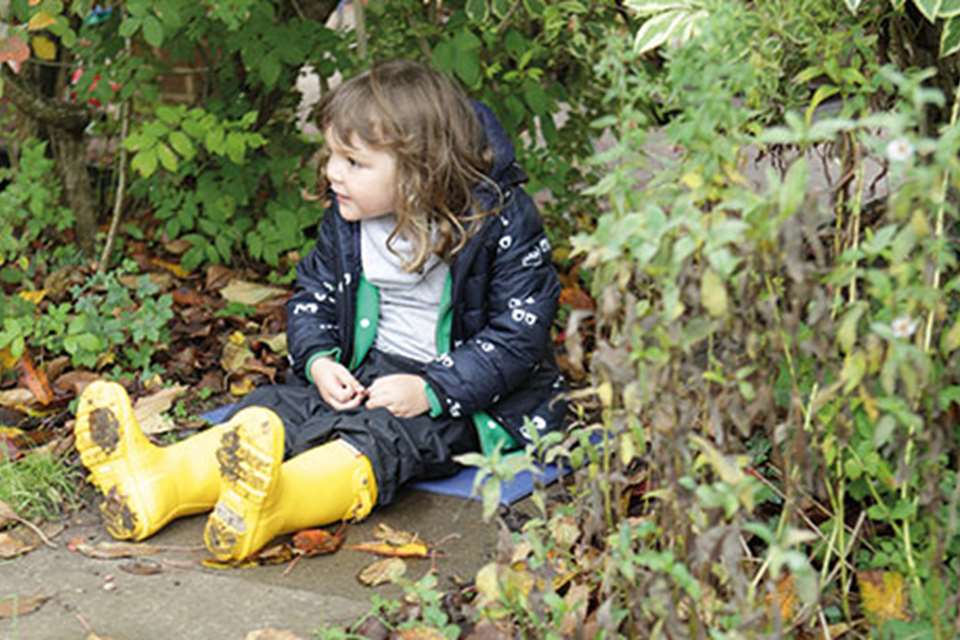Resilience Outdoors - En route
Ruth Thomson
Monday, February 18, 2019
Being outdoors offers unique and plentiful opportunities to build our own and children’s resilience, explains Annie Davy
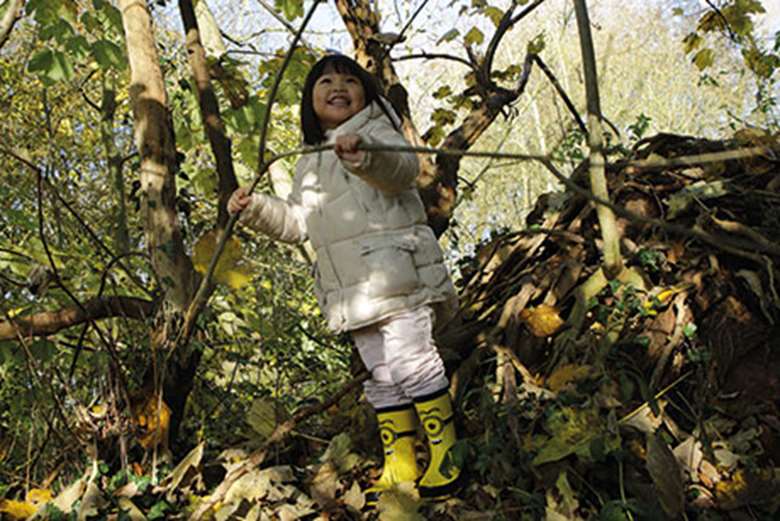
Download the PDF of this article
As early years practitioners, our job is to give children what they need to grow and flourish. Just as young plants need good soil and the right conditions to grow strong roots, children need appropriate nutrients and care to become resilient and weather any storms which may come their way in life.
We don’t want to expose children to ‘harsh climates’ too early, or they will struggle to thrive, but equally we don’t want to overprotect them so that they cannot learn to cope with life’s challenges.
Consider, for example, the growing rise in children with communication difficulties, or the spike in obesity and diagnosed mental health problems in young people. There are also concerns about ‘screen time’, social isolation and the number of children now deprived of free time, outdoor play and access to nature. Alongside these challenges, we can see daily acts of human kindness and courage – the things that help us survive and thrive when the going gets tough.
Resilience enables us to adapt and learn through change, to face difficulty and bounce back with our well-being intact, even strengthened by challenge. Building resilience is a journey, and there are many tried-and-tested ‘routes’ to help us strengthen our own resilience, and support resilience in young children.
Research from different disciplines has identified some ‘ingredients’ or ‘key practices’. Our model draws these practices together to create a holistic ‘resilience mandala’ – a wheel or map which early years practitioners can use to assess and plot their own resilience and consider how to support resilience in children (see above and box overleaf).
Being outdoors provides us with an expanded arena in which children can develop all aspects of resilience. Spending extended time outdoors gives us abundant additional resources to support children’s resilience – and our own.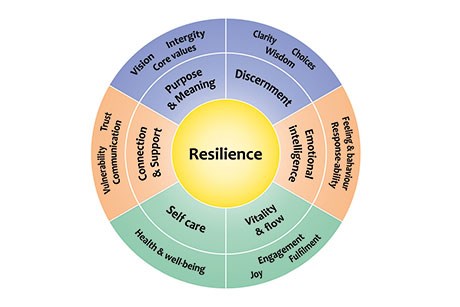
THE ROUTES TO RESILIENCE
Consider the following routes to resilience. Which ones do you find easy and which more challenging? Consider how you can strengthen your environment, routines and your interactions with children to build your own resilience and the resilience of children in your setting.
Route 1: Support a healthy body to create a healthy mind
Recognise the extent to which the body, mind and emotions are interconnected. Focusing on the senses and on the breath can help relieve difficult emotions and calm the mind. Taking care of the body has four key aspects: eating well, sleeping well, moving well and relaxing well.
In practice, think about how well you provide for yourself and for your children in terms of:
good, healthy food, including knowing where it comes from and preparing it fresh for eating
opportunities to be active and move: run, climb, dance, crawl, hop, walk and skip
time and space to relax and breathe. Outdoors you can create spaces to daydream among the beauty of nature. Babies often sleep particularly well outdoors.
Route 2: Release vitality and flow
Vitality and flow are activated when we are fully immersed in activities that energise us and spark joy. This route to resilience is about enjoying what we are doing to the point where we ‘wallow’ or ‘lose ourselves’ in the flow of the activity. And with ‘wallowing’ comes deep-level learning, confidence, competence and self-esteem. Vitality and flow can be deeply serious or playful.
In practice:
- give children nature-rich outdoor spaces in which to explore and roam
- try not to interrupt their concentration and engagement
- when appropriate, ask meaningful, relevant questions
- encourage children to try new things and take some risks.
Route 3: Cultivate emotional intelligence
Emotional intelligence requires emotional maturity and taking responsibility for our feelings as well as recognising and acknowledging the feelings of others. Getting outside and ‘letting off steam’, taking a deep breath and allowing nature to sooth our emotions can be very helpful in times of stress. Nature is also a great teacher – as we see how storms pass, allowing the sun to come out again.
In practice, you can encourage children to:
- talk about their feelings outdoors – what places and things they like or dislike, what makes them happy or sad, what scares them
- understand that it is OK to make mistakes and to learn from them – to take responsibility and not blame others
- bounce back after a scraped knee or getting their wet feet. Teach them how to take care of themselves and each other – for example, rubbing a dock leaf on a nettle sting.
Route 4: Build connection and support
When we are supported, we feel ‘at home’ where we live, work and play. Having a network of family and friends and being part of a community is essential, as is feeling safe and having someone to listen to us. Connection and support are not just about people, although personal relationships are most important. Outdoors we can develop awareness of place and our interdependence with all other life forms.
In practice:
- support children in developing relationships with other children outdoors, through games and collective problem-solving activities and active listening
- involve them in the care of plants, trees and animals and experience how these support our daily survival
- talk about feelings. Some children and adults find it easier to talk about difficult feelings when they are outside.
Route 5: Find and remember your core purpose and meaning
What we do and how we are valued and recognised for who we are is an important part of resilience. We all need acceptance without judgement from others. We need recognition for the contributions we make, however small.
In practice, enable children to engage in tasks with purpose and meaning:
- they can help with sweeping, cleaning, preparing snacks, building shelters for shade and protecting themselves from the cold and rain
- let them care for plants or feed birds in the winter
- encourage them to develop building projects – or create bug hotels and log piles for hibernating creatures.
Route 6: Develop discernment
Learning to step back and reflect on what we have learned is very helpful for building resilience. Developing mindfulness helps us be less caught up with day-to-day busyness, to slow down and reflect on our thoughts and feelings before acting on them. Being outdoors can help us make observations and create space to recognise patters in our behaviour or the behaviour of others.
- In practice:
- teach children to look for and understand signs within nature – for example, what tells us that spring is on its way? How do we know that there is a storm coming or that a river current is strong?
- teach them the names of common plants and birds, and about their habits and properties. Ask open questions about why different things in nature are important to us and how we can support them
- give children lots of opportunities to problem-solve in their own time, and find things out for themselves.
CASE STUDY: J and the tree
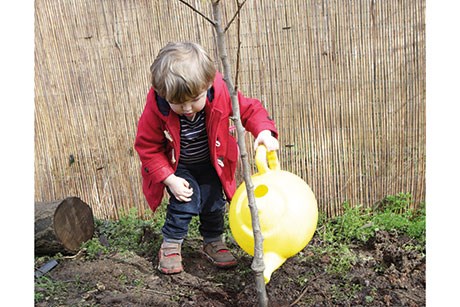 J wanted to help plant the tree. He was the most enthusiastic of the group that day and took the lead. He looked at the label and talked about what kind of tree it was. Most of all he wanted to use the real spade to dig a hole.
J wanted to help plant the tree. He was the most enthusiastic of the group that day and took the lead. He looked at the label and talked about what kind of tree it was. Most of all he wanted to use the real spade to dig a hole.
It took him time and a bit of support from his key person to learn how best to hold the spade, how to place his foot on the spade to dig down and then lift the soil. He remained focused and persevered through this initial difficulty.
Every gesture showed purpose, confidence and determination – it showed his vitality and flow. He was developing his sense of balance and orientation; learning about trees and what they need to grow. He was deeply immersed in a task that had meaning for him.
Over the following year he visited the tree and watered it, protected it from strong winds and bugs and shared its first fruit with his friends. He was developing his physical health, vitality, sense of purpose and meaning, discernment, emotional intelligence and connection to others through sharing the pear tree.
Resilience mandala
The Routes to Resilience Mandala, as created by Milly Sinclair, Amaragita Pearse and myself.
We use it to help individuals and teams to assess their own resilience levels and develop the different routes of practice. It is a deeply reflective and rewarding process. Each route connects to the others – so strengthening one area will support others. Each individual and team will have routes that they are more comfortable and familiar with and ones that take them into new territory.

MORE INFORMATION
READER OFFER
A Sense of Place: Mindful practice outdoors by Annie Davy (Bloomsbury, £17.99 pb; £19.42 eBook) outlines tried-and-tested strategies that support the well-being and learning journey of children through mindfulness, with a focus on learning outdoors and connecting to nature.
Nursery World readers can get a 35 per cent discount by ordering at www.bloomsbury.com and quoting discountcode Davy35.
Annie Davy has more than 20 years’ experience as an early years educator and currently works freelance as projects manager for www.flosoxford.org.uk. Her latest book is A Sense of Place: Mindful practice outdoors (Bloomsbury).
Thanks to children and staff of Grandpont Nursery school in Oxford for their inspiration.




